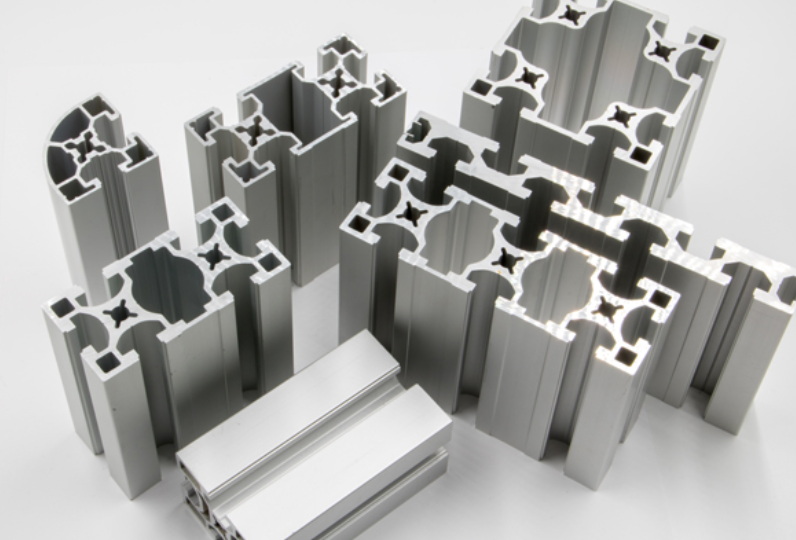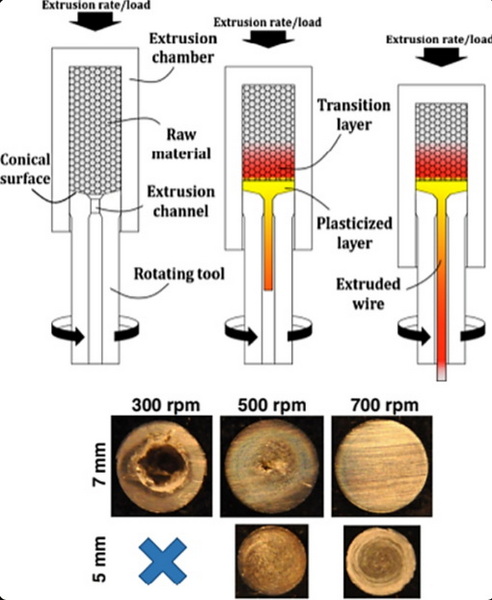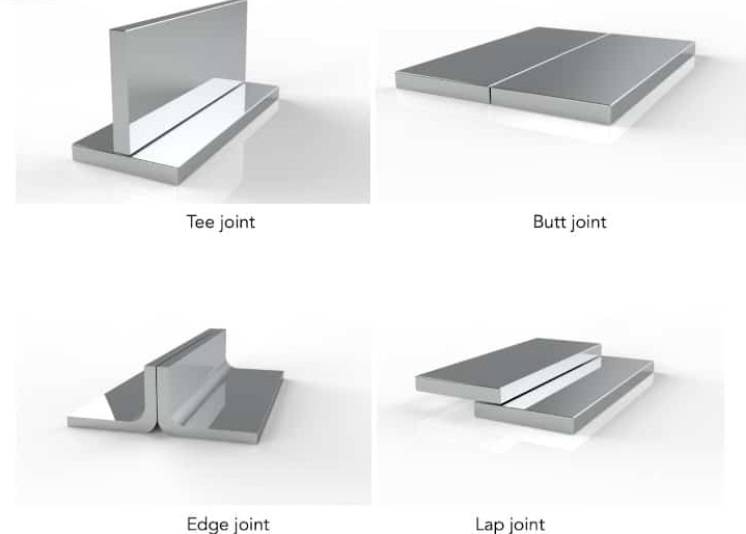Content Menu
● Understanding Aluminum Extrusion Joints
● Factors to Consider When Choosing Aluminum Extrusion Joints
>> 1. Load Requirements
>> 2. Assembly and Disassembly Needs
>> 3. Environmental Factors
>> 4. Aesthetics
>> 5. Cost Considerations
● Types of Aluminum Extrusion Joints
>> Flat Joints
>> Nesting Joints
>> Interlocking Joints
>> Slip-Fit Joints
>> Snap-Fit Joints
● Advanced Joint Selection Techniques
>> Finite Element Analysis (FEA)
>> Prototyping and Testing
● Case Studies: Successful Applications of Aluminum Extrusion Joints
>> Industrial Automation Equipment
>> Architectural Facade
● Innovations in Aluminum Extrusion Joint Technology
● Best Practices for Working with Aluminum Extrusion Joints
● Future Trends in Aluminum Extrusion Joints
● Conclusion
● FAQ
>> 1. What are the most common types of aluminum extrusion joints?
>> 2. How do I determine the load capacity of aluminum extrusion joints?
>> 3. Can aluminum extrusion joints be used in outdoor applications?
>> 4. Are there any special tools required for assembling aluminum extrusion joints?
>> 5. How often should aluminum extrusion joints be inspected or maintained?
● Citations:
Aluminum extrusion joints are essential components in various industries, from construction to manufacturing. These versatile connectors allow for the creation of sturdy, modular structures that can be easily assembled, disassembled, and modified. However, with numerous options available, selecting the right aluminum extrusion joint for your specific project can be challenging. This comprehensive guide will help you navigate the world of aluminum extrusion joints, providing insights into different types, their applications, and factors to consider when making your choice.

Understanding Aluminum Extrusion Joints
Aluminum extrusion joints are specialized connectors designed to join aluminum extrusion profiles together. These joints play a crucial role in creating strong, stable structures while maintaining the flexibility and modularity that make aluminum extrusions so popular.
Aluminum extrusion joints come in various forms, each suited to different applications and load requirements. Some common types include:
1. Flat joints
2. Nesting joints
3. Interlocking joints
4. Slip-fit joints
5. Snap-fit joints
6. Nut tracks
7. Screw ports
8. End joints
9. Hinge joints
10. Key-locked joints
Factors to Consider When Choosing Aluminum Extrusion Joints
1. Load Requirements
One of the most critical factors in selecting aluminum extrusion joints is understanding the load requirements of your structure. Different joint types have varying load-bearing capacities, and choosing the right one ensures the stability and safety of your assembly.
For heavy-duty applications, consider joints that offer superior strength, such as interlocking joints or those utilizing mechanical fasteners. For lighter loads, simpler options like snap-fit or slip-fit joints may suffice.
2. Assembly and Disassembly Needs
Consider how often you'll need to assemble or disassemble the structure. Some aluminum extrusion joints, like snap-fit or slip-fit joints, allow for easy assembly and disassembly without tools. Others, such as welded joints or those using permanent adhesives, offer a more permanent solution but limit flexibility.
3. Environmental Factors
The environment in which your structure will be used plays a significant role in joint selection. For outdoor applications or environments with high humidity or corrosive elements, choose aluminum extrusion joints with appropriate finishes or materials that resist corrosion.
4. Aesthetics
In some cases, the visual appearance of the joints may be important, especially for visible structures or in architectural applications. Some aluminum extrusion joints can be hidden or integrated seamlessly into the design, while others may be more visible.
5. Cost Considerations
Budget constraints often play a role in joint selection. While some high-end aluminum extrusion joints offer superior strength and features, they may come at a higher cost. Balance your budget with your performance requirements to find the best solution.
Types of Aluminum Extrusion Joints
Let's explore some of the most common types of aluminum extrusion joints in more detail:
Flat Joints
Flat joints are simple and versatile, suitable for creating butt joints, lap joints, or tee joints. They require additional fasteners or welding to hold the extrusions together.
Nesting Joints
Nesting joints feature interlocking profiles that fit together, providing a strong connection without the need for additional fasteners. They're excellent for creating clean, seamless joints.
Interlocking Joints
Interlocking joints offer a high degree of stability and strength. They typically involve complex profiles that lock together, creating a secure connection.
Slip-Fit Joints
Slip-fit joints allow for easy assembly and disassembly. One extrusion slides into another, making them ideal for applications requiring frequent modifications.
Snap-Fit Joints
Snap-fit joints provide a quick and tool-free assembly method. They're great for temporary structures or applications where rapid assembly is crucial.

Advanced Joint Selection Techniques
Finite Element Analysis (FEA)
For critical applications, consider using Finite Element Analysis to simulate the performance of different aluminum extrusion joints under various load conditions. This advanced technique can help you optimize your joint selection and overall structural design.
Prototyping and Testing
When possible, create prototypes of your structure using different aluminum extrusion joints. This hands-on approach allows you to test the assembly process, stability, and overall performance of various joint options.
Case Studies: Successful Applications of Aluminum Extrusion Joints
Industrial Automation Equipment
In a recent project for a manufacturing plant, engineers used a combination of interlocking joints and nut tracks to create a modular conveyor system. This design allowed for easy reconfiguration of the production line as needs changed.
Architectural Facade
An innovative building facade utilized slip-fit and hinge joints in its aluminum extrusion framework. This design provided both structural integrity and the flexibility to adjust panels for maintenance or replacement.
Innovations in Aluminum Extrusion Joint Technology
The field of aluminum extrusion joints is constantly evolving, with new innovations emerging to meet the changing needs of various industries. Some recent developments include:
1. Smart Joints: Incorporating sensors to monitor structural integrity and load distribution.
2. Eco-Friendly Materials: Development of sustainable alternatives to traditional joint materials.
3. 3D-Printed Joints: Custom-designed joints created through additive manufacturing processes.
Best Practices for Working with Aluminum Extrusion Joints
To ensure the best results when working with aluminum extrusion joints, consider the following tips:
1. Always follow manufacturer guidelines for assembly and load ratings.
2. Use appropriate tools and torque specifications when tightening fasteners.
3. Regularly inspect joints for signs of wear or loosening, especially in dynamic applications.
4. Consider using thread-locking compounds for joints subject to vibration.
5. Maintain proper alignment during assembly to prevent undue stress on joints.
Future Trends in Aluminum Extrusion Joints
As technology advances, we can expect to see several trends shaping the future of aluminum extrusion joints:
1. Integration of IoT capabilities for real-time monitoring and predictive maintenance.
2. Development of self-healing materials for joints to extend lifespan and reduce maintenance.
3. Increased use of composite materials in joint design for enhanced strength-to-weight ratios.
4. Adoption of augmented reality tools to assist in joint selection and assembly processes.
Conclusion
Choosing the best aluminum extrusion joints for your needs requires careful consideration of various factors, including load requirements, assembly needs, environmental conditions, aesthetics, and cost. By understanding the different types of joints available and their unique characteristics, you can make an informed decision that ensures the success of your project.
Remember that the right joint can significantly impact the performance, durability, and versatility of your aluminum extrusion structure. Don't hesitate to consult with experts or conduct thorough testing when dealing with critical applications. With the right approach, you can harness the full potential of aluminum extrusion joints to create innovative, efficient, and reliable structures for a wide range of applications.

FAQ
1. What are the most common types of aluminum extrusion joints?
The most common types of aluminum extrusion joints include flat joints, nesting joints, interlocking joints, slip-fit joints, and snap-fit joints. Each type has its own advantages and is suited to different applications based on factors such as load requirements, assembly needs, and environmental conditions.
2. How do I determine the load capacity of aluminum extrusion joints?
Determining the load capacity of aluminum extrusion joints involves considering factors such as the joint type, material properties, and the specific design of the joint. Manufacturers typically provide load ratings for their joints, but for critical applications, it's advisable to conduct engineering analyses or physical testing to ensure the joints meet your specific requirements.
3. Can aluminum extrusion joints be used in outdoor applications?
Yes, aluminum extrusion joints can be used in outdoor applications. However, it's important to choose joints with appropriate finishes or materials that resist corrosion and weathering. Anodized or powder-coated joints are often suitable for outdoor use, but always consult with the manufacturer for specific recommendations based on your environmental conditions.
4. Are there any special tools required for assembling aluminum extrusion joints?
The tools required for assembling aluminum extrusion joints vary depending on the joint type. Some joints, like snap-fit or slip-fit joints, may require minimal or no tools for assembly. Others may need standard tools such as Allen wrenches, screwdrivers, or specialized tools provided by the manufacturer. Always refer to the assembly instructions for the specific joint you're using.
5. How often should aluminum extrusion joints be inspected or maintained?
The frequency of inspection and maintenance for aluminum extrusion joints depends on the application, environmental conditions, and load requirements. As a general rule, joints should be inspected regularly, especially in dynamic or high-stress applications. For static structures in controlled environments, annual inspections may be sufficient. However, in harsh environments or applications with frequent movement, more frequent inspections (e.g., monthly or quarterly) may be necessary to ensure ongoing structural integrity and safety.
Citations:
[1] https://www.industrialprofile.com/aluminum-extrusion-joints-design-and-assembly-considerations/
[2] https://vention.io/resources/guides/t-slot-aluminum-extrusion-structure-design-guide-77
[3] https://kimsen.vn/custom-aluminum-extrusions:-5-important-tips-for-engineering-design-success-ne140.html
[4] https://www.alamy.com/stock-photo/aluminum-extrusion.html
[5] https://www.youtube.com/watch?v=k9j9TRgx1uw
[6] https://starext.com/news/aluminum-extrusion-finishing-fabrication-frequently-asked-questions-faq
[7] https://www.gabrian.com/joining-aluminum-extrusions/
[8] https://vention.io/blogs/top-3-design-tips-for-effective-t-slot-aluminum-extrusion-structures-42






















